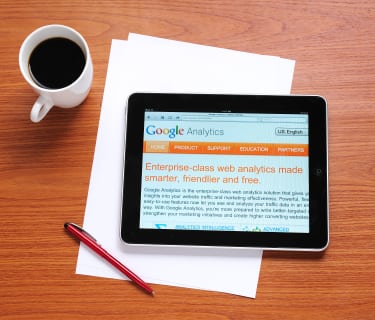 |
The social media catchphrases often used by PR pros and marketers are usually some variation on "increased fan engagement," "shareable content creation" and "real-time listening," among others. These catchphrases should be bandied about—social media has changed communications at warp speed, and these are the key components driving the changes.
But in the C-suite, the catchphrases remain "business outcomes" and "the bottom line." With more time, staff and resources being spent on social media, being able justify the use of these resources is increasingly critical.
If you're thinking to yourself, "Great…but doesn't it cost a lot to track business outcomes from social media?" and you've never worked before with Google Analytics, well, the answer is that tracking data doesn't have to cost you more than your time and expert analysis. Here are four quick Google Analytics tips to help you get started today.
-
Get Beyond the Top Line to the Impact on the Bottom line: "Novice users should not be afraid to explore the platform and invest time in familiarizing themselves with the various ways Google Analytics can be used to track and segment data," says Social Media Summit/Taste of Tech speaker Allyson Hugley, EVP of measurement, analytics & insights at Weber Shandwick. "The metrics captured on the standard Google Analytics reporting dashboard are the tip of the iceberg." Use the custom dashboard and data filtering features to glean deeper insights from more targeted data.
-
Beware of Data With No Direction: Intermediate users more familiar with Google Analytics functions and metrics should create an analytics plan based on business goals and objectives before setting up any tracking. "Google Analytics offers myriad ways to slice and segment data. It’s easy to get distracted and overwhelmed by the volume of data that can be generated," says Hugley. To avoid getting lost in the numbers, have a plan. "The data obtainable via Google Analytics will only be meaningful if it can be interpreted in the context of the desired business outcomes. Tracking progression toward goals and determining when course correction is needed are critical."
-
Take a “Tool + Talent” Approach: Google Analytics is a free tool, but investments in the right analytics (human) resources to make sense of the data is key. "Absent the human analytics element, Google Analytics is just numbers and trend lines," says Hugley. "It’s the analysts who understand the metrics and the business goals that convert the numbers and trend lines into meaningful and actionable insights."
-
Use Dashboards That Fit Your Needs: In March 2012, Google Analytics introduced a set of social media reports to help measure the value of social media, and experts have made templates available to the public. Analytics Talk has created a three-piece dashboard with off-site activity, on-site activity and conversions/outcomes to evaluate user activity throughout the conversion process. You can download the social media dashboard for Google Analytics, and customize it if you'd like—just make sure it fits your plan.
Follow Bill Miltenberg: @bmiltenberg
Attend PR News’ two-day Social Media Summit/Taste of Tech event June 21-22 in New York City and learn more from digital leaders like Allyson Hugley.
